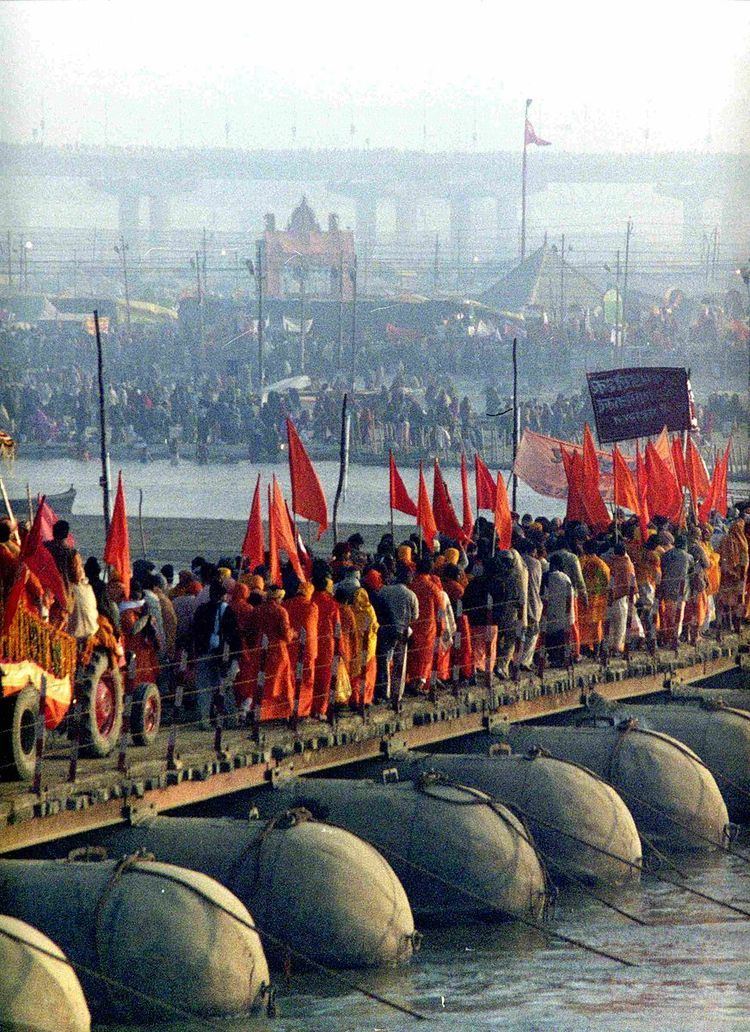 | ||
Mela (Sanskrit: मेला) is a Sanskrit word meaning 'gathering' or 'to meet' or a 'fair'. It is used in the Indian subcontinent for all sizes of gatherings and can be religious, commercial, cultural or sport-related. In rural traditions melas or village fairs were (and in some cases still are) of great importance. This led to their export around the world by south Asian diaspora communities wishing to bring something of that tradition to their new countries.
Contents
- Notable Melas in South Asia
- Usage outside South Asia
- Notable Melas outside the Asian subcontinent
- References
In recent times "Mela" also popularly refers to shows and exhibitions. It can be theme-based, promoting a particular culture, art or skill. Generally in "melas" people can find eateries, entertainment activities, shops and games.
The Kumbh Mela, held every twelve years, at Allahabad, Haridwar, Nashik and Ujjain is one of the largest fairs in India, where over 60 million people gathered in January 2001, making it the largest gathering anywhere in the world.
Notable Melas in South Asia
Usage outside South Asia
In modern usage outside South Asia it has become a term that shows widespread diversity of interpretation, just as has been the case in South Asia. One can find a Nepalese mela in the USA, or a Bengali mela in London, such as the Baishakhi Mela. For many it is a wider intercultural (though mainly Asian) festival incorporating music, dance, food and other aspects of mainstream culture.
Since the 1980s an increasing number of melas have regularly been held in larger towns outside south Asia, especially in the UK and North America. The larger melas tend to be those with larger ethnic minority populations, but many melas are held in communities with small South Asian diasporas. Community ownership of these melas is important to the south Asian communities who see them as opportunities to share their cultural heritage with the mainstream. They are opportunities for bridge building and community building and can perform a strong socially cohesive function.
More successful outside-of-Asia melas tend to have a strongly diversified funding base with private/public/third sector collaboration. Public money is often spent on the melas. This reflects the mela organisers and public authorities joint conviction that, as in the sub-continent, melas are for everyone.
